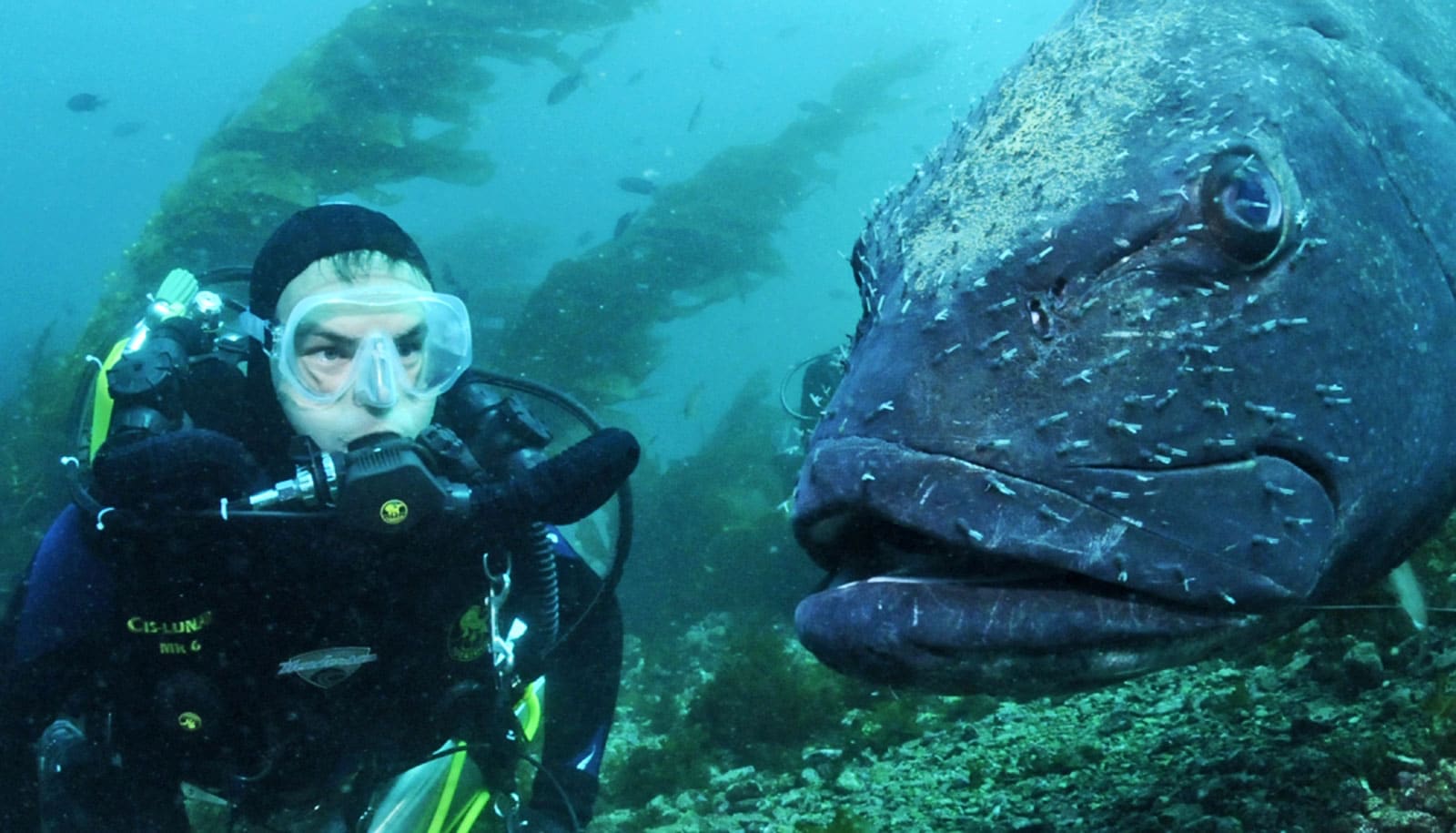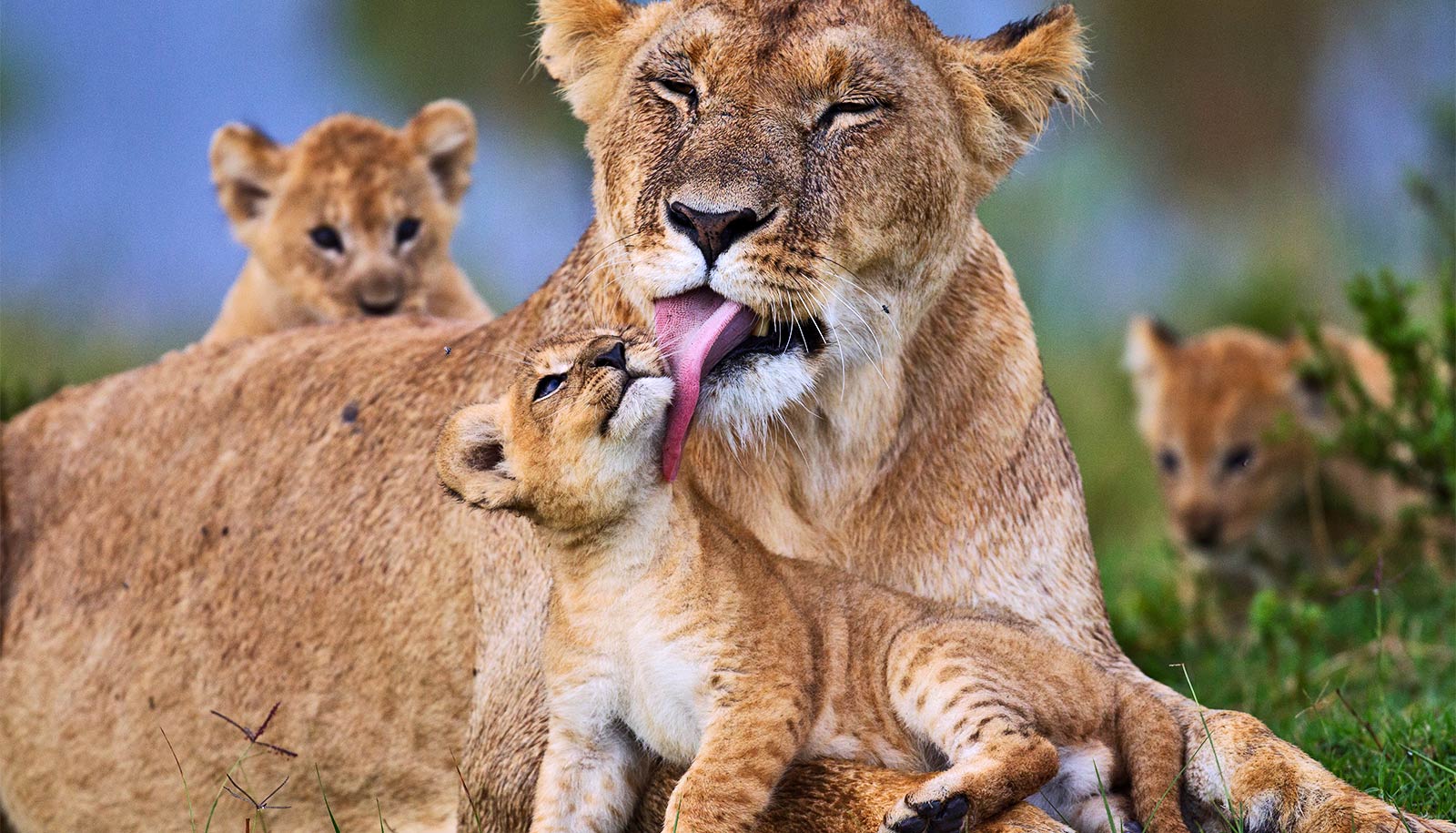A new conservation project called Spotting Giant Sea Bass is a kind of like a Facebook for fishes, where citizen scientists upload photographs of fish and share information about sightings.
Capable of growing bigger than an average-sized grizzly bear, and as imperiled as the black rhino, giant sea bass are the largest bony coastal fish in California. They can live to be 75 years old and can exceed 7 feet and 500 pounds.
A recent genetic study suggests that fewer than 500 breeding giant sea bass may exist in California.
Most importantly, their ecological contributions as an apex predator in kelp forest ecosystems likely help to shape how these underwater forests work. Now, researchers are launching the citizen science program to help these endangered behemoths.
Harmless despite their size, these curious and gentle giants can be the highlight of a SCUBA dive. A previous study found that giant sea bass are worth more alive than dead: Their value as an ecotourism attraction outweighs their value when caught and sold by gillnet fishermen. Encounters with giant sea bass, however, are rare. In fact, a recent genetic study suggests that fewer than 500 breeding individuals may exist in California.
To effectively recover this species, which is categorized as critically endangered by the International Union for Conservation of Nature’s Red List, marine biologists need more and better data. That’s where the new project’s website comes in.
“Spotting Giant Sea Bass is an example of how we can leverage the power of technology to help solve problems in the oceans,” says Douglas McCauley, an associate professor in the University of California, Santa Barbara’s ecology, evolution, and marine biology department and director of the Benioff Ocean Initiative, which funded and designed the Spotting Giant Sea Bass website.
During the launch event, attendees were able to see giant sea bass that have lived at the Aquarium of the Pacific since it opened over 20 years ago and observe a demonstration scan of those fish into the database. As part of its conservation initiatives, the Aquarium of the Pacific was the first aquarium to successfully breed giant sea bass in 2016.
The idea for the project was born when two undergraduates, Conner Jainese and Katelin Seeto, discovered that each giant sea bass carries its own unique spot pattern that can be read like a barcode to identify individuals. The Spotting Giant Sea Bass website makes matches by using pattern recognition algorithms first developed by astrophysicists to spot patterns in star constellations and later used by NASA on the Hubble Space Telescope.
Giant sea bass spots form a miniature “constellation” on their flanks. The program leverages the unique spot pattern of each giant sea bass recorded to match up fish sighted on different days and in different places. For example, a giant sea bass named Nimrod was first photographed at a popular dive site off Catalina and then a year later was recorded at the exact same location.
Divers who upload a photo of a giant sea bass can receive notifications when “their” fish is spotted by another diver.
In website testing prior to launch, more than 100 individuals ranging from the Northern Channel Islands to San Diego have been recorded on the website. Some observations have occurred within four different marine protected areas.
“By matching the unique spot patterns of individual giant sea bass in images submitted to the website we can begin to answer critically important research questions,” says ichthyologist Milton Love, a research biologist with the UC Santa Barbara’s Marine Science Institute. Data from the project help marine biologists better track the ups and downs of the giant sea bass population, determine whether they are using marine protected areas, identify their spawning grounds, calculate how far these fish move, and identify the threats they encounter on their travels.
With California divers logging more than 1 million dives annually, Spotting Giant Sea Bass serves as a portal for citizen scientists to get involved in marine research and create data that could help with the recovery of an endangered species. Reporting data also gives citizen scientists a vested interest in giant sea bass conservation.
Citizen scientists now do more than collect data
Divers who upload a photo of a giant sea bass can receive notifications when “their” fish is spotted by another diver. As these fish can live to at least 75 years old, the architects of the Spotting Giant Sea Bass project hope many interesting stories will unfold.
“Staring eye to eye with a fish that is twice as old as you are and is big enough to swallow small sharks is a powerful experience,” McCauley says. “We are really excited about how Spotting Giant Sea Bass can help connect people around that experience and democratize the process of doing research that can help protect the future of this amazing species.”
Additional support for the Spotting Giant Sea Bass project was provided by the Aquarium of the Pacific and the Santa Barbara Channel Marine Biodiversity Observation Network. The Aquarium of the Pacific’s dive team also participates in the program.
Source: UC Santa Barbara



